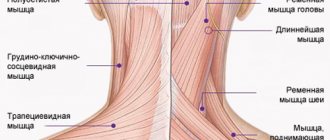Useful articles
Sinusitis is a pathological inflammatory process in the paranasal sinuses, depending on the location, it manifests itself in the form of sinusitis, ethmoiditis, frontal sinusitis, sphenoiditis. Very often it is not an independent disease, but a complication of other pathologies of the respiratory system. Headache due to sinusitis is the first classic symptom that greatly worries the patient.
Causes
Pain sensations are usually localized on the face, on both sides of the nose, in the frontal lobe. It can have pronounced intensity, especially after waking up. This is due to the fact that discharge from the mucous membrane accumulates in the paranasal sinuses during the night. But you still need to visit an otolaryngologist in any case.
The course of the inflammatory process is complicated by concomitant pathologies of the upper respiratory tract, for example:
- polyps and other neoplasms, foreign objects in the nasal cavity;
- deformation of the nasal septum due to injury or congenital features;
- proliferation of adenoid tissue (typical for children under 11–13 years of age; it is up to this age that adenoids, increasing in size, interfere with air ventilation in the nasal passages and can cause bacterial complications;
- an allergic reaction accompanied by rhinorrhea and swelling of the mucous epithelium;
- vasomotor rhinitis.
Signs of sinusitis
Manifestations of the disease depend on its stage. The first signs of classic sinusitis are mild. All the symptoms are more like a regular runny nose. The patient has a constantly stuffy nose, but breathing is partially preserved.
The onset of acute sinusitis is manifested by the following symptoms:
- Transparent and profuse discharge from the nose, which gradually becomes mucopurulent with an unpleasant odor.
- Soreness at the base of the nose, worse in the morning after waking up.
- Swelling of the eyelid and cheeks on the affected side.
- Impaired nasal breathing due to nasal congestion.
- Loss of smell.
- Bad breath.
- Feeling of severe pain in the bridge of the nose when bending over. They can radiate to the corresponding half of the face, forehead, upper jaw or temple.
- When the tear duct is blocked, lacrimation occurs.
- Signs of intoxication of the body: temperature above 38°C, chills, weakness, headache.
Without proper treatment, the disease progresses. The patient complains of severe nasal congestion, nasal voice, feeling of heat, drowsiness, nausea and vomiting. Appetite is reduced or absent. The temperature rises to critical levels, nasal discharge becomes greenish-purulent.
Prolonged sinusitis becomes chronic, characterized by the following symptoms:
- nasal congestion that persists even after the use of local vasoconstrictors;
- decreased sense of smell;
- yellowish-green thick nasal discharge;
- headache pressing on the eyes and frontal area;
- swelling and redness of the eyelids;
- cracks in the vestibule of the nose;
- reduction of pain in a horizontal position;
- night cough caused by pus draining down the back of the throat;
- malaise, fatigue;
- sore and sore throat;
- normal or subfebrile temperature – 37.1-37.5°C.
The symptoms of chronic sinusitis are much less pronounced than in acute cases. Allergic and vasomotor sinusitis are characterized by alternating periods of subsidence and exacerbation of the disease.
Features of the clinical picture
The longer the inflammation, the more pronounced the headache will be, but it will not have a clear localization and usually occurs periodically throughout the day. Often its intensity depends on the position of the body, for example, it decreases at rest and increases with bending and moving the head, tension, or a tight collar of clothing.
Painful sensations during inflammation in the paranasal sinuses have their own characteristics:
- increasing tactile sensitivity of facial skin;
- there is a feeling of fullness in the area of localization of the pathological process; when pressing on the area of the bridge of the nose, the wings of the nose, acute pain occurs;
- discomfort increases when the temperature changes (for example, when leaving a warm room into the cold);
- more pronounced in the morning, immediately after waking up, especially if during the night's rest in the bedroom the parameters of humidity and air temperature are not observed;
- manifest against the background or after suffering from acute respiratory viral infection.
Most respiratory viral infections (with the exception of influenza, COVID-19 and some others) are characterized by rhinorrhea, caused by inflammation in the mucous membrane of the nasal cavity and increased vascular permeability. Normally, the acute phase of rhinitis lasts about 1–3 days, after which noticeable relief is felt. However, in some cases, a common runny nose develops into sinusitis, and one of its first symptoms is an unpleasant persistent headache.
Sinusitis: Cause, treatment
We all treat a runny nose differently: some, at their own discretion, on the advice of friends, relatives or advertising, buy nasal drops and treat themselves, others, when the first signs of the disease appear, prefer treatment with folk remedies, others immediately go to the doctor, and still others generally believe that a runny nose is a harmless disease. Many people do not realize that one of the most dangerous consequences of a runny nose (rhinitis) is sinusitis .
Four empty cavities filled with air are located around our nose - the so-called sinuses. The sinuses, covered with mucous membrane, connect to the nose itself. Through the nose, an infection enters the sinuses, causing sinusitis. And if the maxillary or maxillary sinus is damaged and infected, the person develops sinusitis.
The cause of sinusitis is an infection in the maxillary sinus that penetrates through the nose, and sometimes through the blood, if a person has a pathological process in the area of the upper teeth. Sinusitis occurs in two forms - acute and chronic.
In acute sinusitis, a person experiences tension similar to pressure in the area of the affected sinus, accompanied by severe pain. Sometimes the pain spreads to the forehead, temples and cheekbones. With bilateral sinusitis, the pain covers the entire face. Very often it spreads to the teeth area. And a sick person thinks that his teeth really hurt. As a rule, with sinusitis, against the background of elevated temperature, lacrimation is observed, the sense of smell is impaired, and performance decreases. Acute sinusitis has four types - purulent, catarrhal, odontogenic and allergic.
In chronic sinusitis, the inflammation is located deeper and affects not only the submucosa, but also the bone walls of the maxillary sinuses. A prolonged and debilitating runny nose is one of the most characteristic symptoms of chronic sinusitis, accompanied by nasal discharge - from purulent with an odor, viscous and mucous to watery. In some people, chronic sinusitis may be painless, and the accompanying pain may be insignificant. With chronic sinusitis, increased swelling of the face and fatigue are observed. In addition, the quality of life deteriorates significantly.
A person should know that an advanced form of sinusitis can cause serious consequences - meningitis, swelling of the meninges, rhinogenic brain abscess.
Our Center has accumulated extensive experience in treating all forms of sinusitis. The diagnosis of “sinusitis” is made only after a careful study of the patient’s symptoms, rhinoscopy results, blood tests, nasal discharge, etc. Diagnostic puncture of the sinuses allows our doctors to make an accurate diagnosis and prescribe effective treatment. When treating sinusitis, our Center uses pharmacotherapy, laser therapy, minimally invasive endoscopic surgery, a treatment method without large traumatic incisions, microsinusrotomy based on modern domestic and foreign recommendations.
Patients should know that only qualified medical care can prevent complications when sinusitis occurs and not lead to its chronic form.
To prevent the occurrence of sinusitis, patients must correctly and effectively treat the underlying disease that caused the development of bacteria and viruses.
Differential diagnosis of sinusitis
The combination of pain, nasal congestion, fever and general malaise is a classic symptom of the disease. For clear localization of the pathological process, radiography is necessary. If neoplasms are suspected, tomography is performed based on the anatomical features of the facial skeleton.
Additionally, it is recommended to take a blood test (based on the level of ESR and leukocyte formula, the doctor can judge the nature and intensity of the inflammatory reaction), bacterial culture of discharge from the nasal cavity (sometimes the cause of the pathology is fungal microflora, which requires appropriate treatment). An examination by an ENT specialist and sinusoscopy is required.
What are the consequences of untimely treatment of sinusitis?
We have already said that untimely and improper treatment of sinusitis can lead to chronic sinusitis. Also, untimely treatment can cause complications in other organs and systems, even death.
Purulent untreated sinusitis can lead to the fact that pus from the maxillary sinus passes through the thin orbital wall into the eye orbit. This can cause complications such as:
- cellulitis of the orbit
- retrobulbra abscess
- abscess of the veins of the orbit, etc.
These processes can lead to vision loss.
There are also complications of sinusitis such as:
- rhinogenic meningitis
- rhinogenic brain abscess
- rhinogenic thrombosis of the cavernous sinus
- rhinogenic sepsis, etc.
All these conditions are a threat to human health, and sometimes life, and require long-term treatment in a surgical hospital and intensive care unit.
Therefore, I repeat once again, timely contact with an ENT doctor and correctly selected therapy can avoid unwanted consequences and complications.
Principles of treatment of headaches due to sinusitis
The most important point of therapy is the elimination of congestion, the main cause of pain. For treatment use:
- vasoconstrictor drops: indicated in the acute period, the duration of treatment with one drug (we are not talking about the trade name, but about the active substance) should not exceed 4-5 days, after which an analogue is prescribed or the drug is discontinued;
- non-steroidal anti-inflammatory drugs, which simultaneously have analgesic properties;
- nasal sprays containing corticosteroids: help reduce the intensity of the inflammatory reaction;
- enzymes and mucolytics that dilute the contents of the paranasal sinuses and facilitate the passage of mucus;
- antihistamines that help reduce swelling (prescribed for a short time, for the symptomatic treatment of headaches due to sinusitis);
- antibiotics (used either topically, in the form of sprays, or systemically in tablet form when a bacterial infection is confirmed), antifungal, antiviral agents;
- antimicrobial drugs containing silver ions;
- herbal remedies based on eucalyptus, menthol, etc.
In severe cases of the disease, physiotherapy is indicated for the treatment of headaches due to sinusitis. If the desired effect from conservative therapy is absent, a puncture is suggested - puncture of the paranasal sinus, cleansing it of purulent contents and rinsing with disinfectant solutions.
Sinusitis headaches tend to be recurrent and chronic. Therefore, not only treatment, but also prevention is important. To reduce the drug load on the body, you need to monitor the parameters of the air temperature in the room, humidity, and remove all “dust collectors” from the house (stuffed toys, carpets, various trinkets, etc.). If we are talking about frequent sinusitis at an early age, doctors recommend thinking about removing the adenoids.
The text was checked by expert doctors: Head of the socio-psychological service of the Alkoklinik MC, psychologist Yu.P. Baranova, L.A. Serova, a psychiatrist-narcologist.
CAN'T FIND THE ANSWER?
Consult a specialist
Or call: +7 (495) 798-30-80
Call! We work around the clock!
What is sinusitis and how is it formed?
Sinusitis is an inflammation of the mucous membrane of the maxillary sinus. Depending on the clinical manifestations and duration of this inflammatory process, sinusitis is divided into acute and chronic, but we will talk about this a little later. Inflammation occurs against the background of pathogenic microflora entering the maxillary sinus. This could be bacteria, viruses, fungal infection, etc. The main route of infection is the upper respiratory tract. Often the infection enters the sinus through the roots of diseased teeth, causing odontogenic sinusitis, the treatment of which is mainly surgical.
We come into contact with infections every day. However, not everyone suffers from sinusitis. It is necessary to understand that for the development of the inflammatory process in the maxillary sinus, in addition to external pathogens, local predisposing factors are also of great importance:
- Firstly, it is a weakening of local and general immunity.
- Secondly, these are anatomical changes, for example, a deviated nasal septum.
- And thirdly, these are other diseases of the nasal cavity. Such as nasal polyposis, chronic hypertrophic rhinitis, chronic adenoiditis, diseased, carious teeth.
The combination of these factors leads to the development of sinusitis.
Symptoms of sinusitis
Acute sinusitis is characterized by the following symptoms:
Runny nose
Sinusitis is characterized by a prolonged runny nose with purulent or mucous discharge. A normal runny nose should go away within 7-10 days. If the runny nose drags on and there is no improvement in the condition, then the inflammatory process has probably spread to the mucous membrane of the paranasal sinuses. One of the signs of a runny nose turning into sinusitis may be alternating congestion in the right and left nostrils.
More about the symptom
Morning sputum
Mucus from the sinuses flows into the nasopharynx, causing frequent expectoration and copious sputum production in the morning.
Sinus pain
A characteristic symptom of sinusitis is an unpleasant feeling of heaviness or pain in the cheek area. Sometimes not only the area of the inflamed sinus itself hurts, but also the teeth, eyes, and temples. The pain, less noticeable in the morning, intensifies in the evening. Pain also increases when bending forward.
Weakness
General weakness and fatigue with sinusitis are caused by produced toxins.
More about the symptom
Temperature
In acute sinusitis, the temperature may rise to 38°C or higher.
More about the symptom






